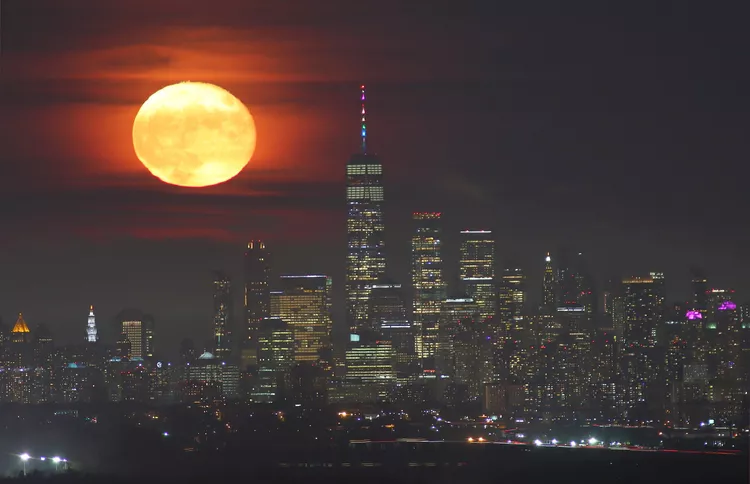Summary of June Celestial Events
Even though May’s lunar eclipse brought stargazers out in force, June’s action-packed roster of celestial events promises to keep those eyes on the sky.
This month’s nighttime spectacles run the gamut from a dazzling supermoon, when the month’s at its brightest, to visibility of not one but five planets at once.
Ready to get stargazing? As always, you’ll enjoy the best nightscapes in an area with limited light pollution, such as a certified Dark Sky Place or one of our favorite national parks for stargazing.
Bookmark these five celestial events for a month of cosmic sightseeing.
June 14: Strawberry Moon
It’s supermoon season in the Northern Hemisphere, and what better way to celebrate than with a full strawberry moon on June 14? Now, the term strawberry moon has nothing to do with the actual look or hue of the moon. According to the Old Farmer’s Almanac, indigenous communities used this name for the June moon because it coincided with strawberry harvests in parts of North America.
The fact that it’s a supermoon, when the full moon appears slightly larger than its annual mean size, means it will look more vibrant—particularly when the moon reaches its peak size around 7:50 a.m. ET, according to astrophotography app Photo Pills. At that time, the moon will be at its closest point to Earth: a quick 222,664 miles away (that’s roughly nine times around Earth via the equator).
June 16: Mercury’s Greatest Western Elongation
See the planet Mercury in a new light as it nears its point of greatest western elongation (the largest point of separation from the sun) on June 16. For much of the year, Mercury orbits closer to the sun than Earth, according to Photo Pills. The sun overpowers this small planet, making it faded and tough to see. By June 10, Mercury will appear brighter; it reaches its brightness climax—the point of greatest western elongation—on June 16.
June 21: Summer Solstice
While the summer solstice isn’t necessarily a cosmic event, it is the longest day of the year, marking the first astronomical day of summer in the Northern Hemisphere (and the shortest in the Southern Hemisphere), according to the Old Farmer’s Almanac.
Cultural and celestial solstice celebrations abound. Some of the best places to enjoy the solstice include Anchorage, Alaska, home of the Summer Solstice Festival; Ottawa, Canada, which hosts the annual Summer Solstice Indigenous Festival; and England’s Stonehenge, where the sun rises behind the heel stone in near-perfect alignment.
June 24: Alignment of Mercury, Venus, Mars, Jupiter, and Saturn
June’s planetary lineup promises an out-of-this-world sight: Mercury, Venus, Mars, Jupiter, and Saturn will be aligned and visible around dawn all month, according to an NPR interview with Sky & Telescope’s observing editor, Diana Hannikainen. Earthlings won’t enjoy this action-packed view again until 2040, Hannikainen said.
By June 24, Mercury will become easier to spot above the horizon. A waning crescent moon that same night will be the cherry on top of the interstellar event. Grab those binoculars and get to your vantage point at least 30 minutes before the sun rises. You’ll need a clear view of the horizon out to the east to fully enjoy this show.
June 27: June Bootids Meteor Shower
Some summers, the June Bootids meteor shower fills the sky with hundreds of eye-popping meteors per hour. Most years, it generates a weak handful of meteors per hour. If you’re willing to test your luck, mark your calendar for June 27, when it tends to be the most active, according to space news outlet Spaceweather. To monitor for it, find the Bootes constellation, located left of the Little Dipper, either before dawn or after dusk.




